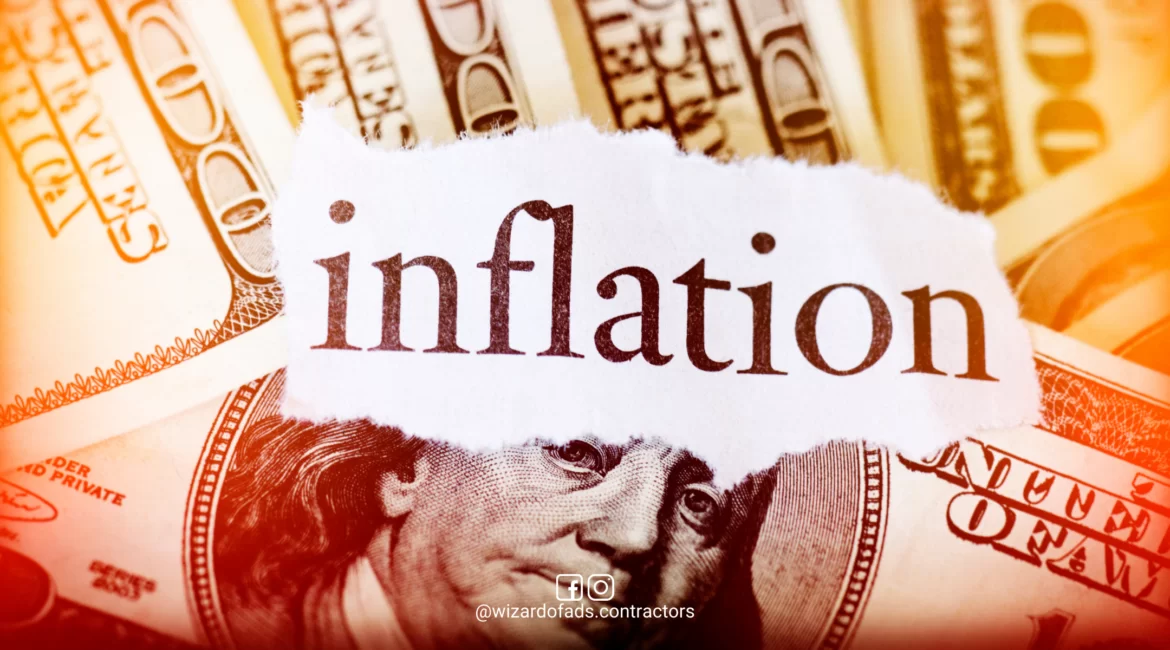
You’ve been watching it happen, but like the first few months before Covid-19 exploded in early 2020, you’re still not convinced this is something to be worried about.
It is.
It is serious, and it is having a huge impact on your bottom line. Either by making your prices out of reach for more people or in the added advertising spend in a desperate bid to snag just one more lead, no matter what the quality or cost.
And you know from experience that spending the money on PPC ads doesn’t always translate into the volume of appointments you need to generate the revenue that’s needed to pay for the spend.
But you still spend the money, wringing your hands and staring at the ceiling for yet another sleepless night as you try to figure out how to make ends meet.
In this article, I’m going to tell you how to do it with a far less risky strategy, though contrary to the convincing slurry of nonsense PPC people have been spinning for years.
But first, let’s take a look at how things have come to pass.
Your cost-per-click (CPC) is the result of an auction algorithm. Your position on the search feed is based on multiple variables to determine where your ads are placed, and how much you pay. These include factors such as your website’s quality score, your competitive landscape, your specific bidding strategy, and targeting.
YOUR WEBSITE’S QUALITY SCORE
Your website’s quality score has a huge impact on your CPC. Your website’s quality score is Google’s way of deciding who has the most relevant content based on the search query. Google will give preferential treatment to ads that it determines are most relevant.
When the content on your landing page is more relevant than your competition, your ad has the opportunity to hold a superior position on the search feed.
If the ad itself is poorly written or targets the wrong intended audience your click-trough-rate (CTR) will take a nosedive. The Google algorithm will take this as a signal your ads are not relevant enough, and they will start charging you more to appear in the same position.
YOUR COMPETITIVE LANDSCAPE
Google Ads is first and foremost, an auction. For the most part, it behaves like an auction. The more parties who enter into the auction, the higher bids are likely to get.
Not only are there a lot more competitors trying to eat your breakfast, but Google has also made changes to how people view the search content. Gone are the right sidebar ads in the coveted “above the fold” position, but now everything above the fold is likely to be a PPC Ad instead of your organic website.
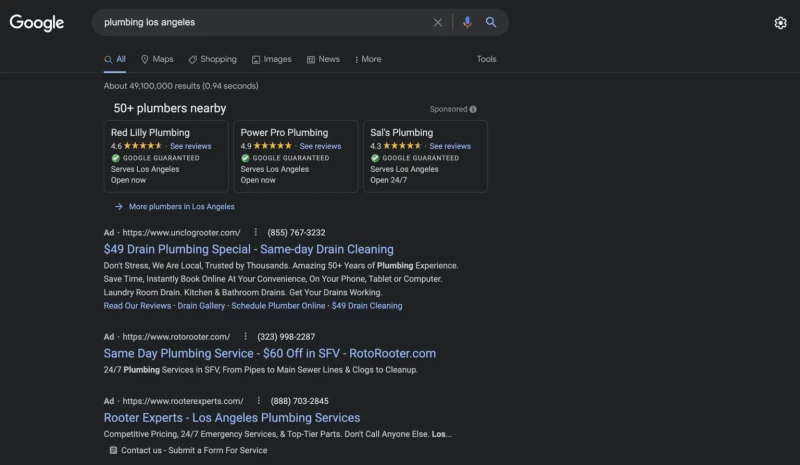
Even after a first scroll, your prospect is likely to just see more ads…
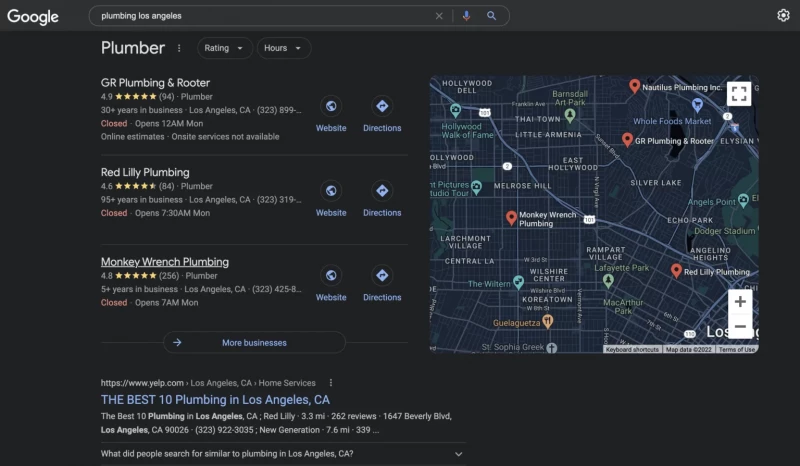
And on mobile, it is just more of the same.
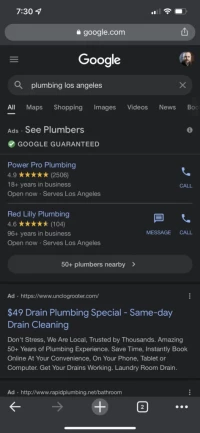
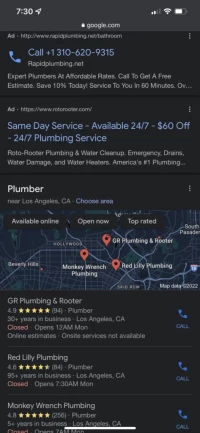
By combining less ad space with larger ads and more competitors, Google is able to charge significantly more for you to stay at the top of the page.
YOUR BIDDING STRATEGY
Probably the most diabolical of all the changes we’ve seen from Google is the shift away from “exact match” keywords to “close variants”. This expanded the “targeting” to show searches that are slight deviations from your keyword. Then Google Ads further diluted your “exact match” keywords to include searches that “share the same meaning” including implied words, synonyms, and paraphrasing.
Why does this matter? If you intended to “target” a specific prospect looking for your goods, now all of the sudden you are showing up and potentially paying too much for broad keyword queries. This shoots up your CPC on non-related click-throughs, and worse yet, drives down your website’s quality score on those people who didn’t what your thing in the first place.
But Google didn’t stop there. If you use one of the most common bidding strategies, Enhanced CPC, you’ve given Google’s algorithm the freedom to increase your bids when it sees an opportunity to “improve” your conversion rate.
While originally tempered to a modest 30% bid increase, in 2017, Google raised its authority to increase your bid structure to whatever its AI feels prudent. And here you are thinking you were the boss. HA! Does this smell anything like Skynet? Anyone? I’ll be back.
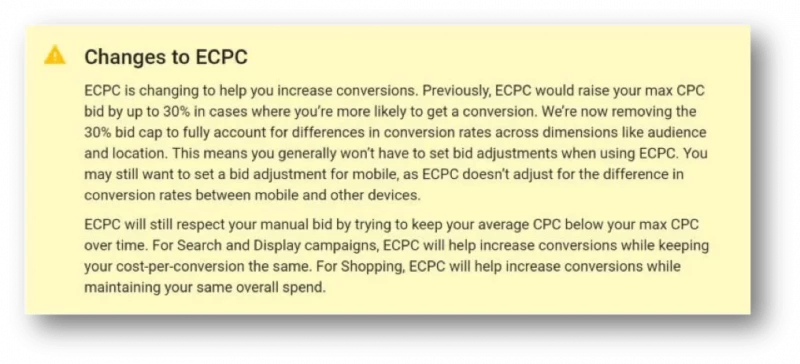
So now if Google believes your “enhanced” CPC keywords could perform better with, say, a 75% bid increase – it will make the change automatically. Yooooooooouuuuuuurrrr’e welcome.
YOUR TARGETING
Google describes the zero moment of truth as the moment in time when a small segment of the 7% of your market needs your thing right now. Some of those 7% already have a service provider. Others can’t (or won’t) buy your thing. With the remaining segment holding the banner of “The Undecided”. Not too promising-sounding, is it?
Roughly 50% of these people will be transactional-minded and since all things are essentially equal online, the cheap option is the only option. The other 50% of The Undecided are looking for the right place to buy from. The one that will provide quick and competent service at the right price. They are open to paying a bit of a premium for competence and convenience, but they are nobody’s fool. Since they have no affinity toward your brand, they still expect the lowest price. 70% of customers who are acquired through unbranded PPC remain casual or disengaged from your long-term sales efforts to convert them into a loyal customer.
This is the issue you face day in and day out when you are not a household name.
Targeting is yet another way to reduce the number of people who are likely to see your ad, let alone click through. When you eliminate demographic, psychographic, or even geographic factors, you are reducing the one and only chance you have of getting in front of the next big sale.
All in a bid to keep your advertising budget in line from a company that is doing everything in its power to force you to spend more.
OTHER NEFARIOUS PLOTS
Everything discussed thus far is how Google is costing you money, but they aren’t your only nemesis. Your competitors are gunning for you too, and not just the guy down the street, but the multinational aggregators (like Yelp), your own suppliers, and manufacturers, and of course the endless stream of grifters looking to make the quick buck on the short con.
From clicking on your ads and bouncing off your website, to more devious strategies like destroying your Local Service Ads (LSA) and Google Business Profile (formerly GMB) by putting in fictitious requests, everyone, it seems, is working as hard to succeed, as they are to see you fail. Lead gen companies (eg. Angie’s List, Home Advisor, and Yelp) are paying anything to capture your lead before you do, then selling that same lead back to you at a king’s ransom, along with 5 – 7 of your competitors. All while your suppliers and manufacturers are bidding up your keywords in an effort to “help” you get the sale based on their brand recognition, like somehow that’s supposed to make any sense to you.
Finally, your ads often rely on cookies. Not the delicious kind, but the ones that tell you ad campaigns who to target. With more and more privacy legislation coming down the pipe every day, there will come a time that targeting aside from geography will no longer be an option. Even today, with the greater percentage of the planet using an iPhone, VPNs, and Incognito windows, targeting tactics are quickly receding into a bygone era.
SO WHAT CAN YOU DO TO SAVE MONEY?
Nothing. There is nothing you can do to save money in advertising. Saving money in advertising is like stopping your clock to save time. It just ain’t gonna work.
Yeah but, I can blah blah blah…
This is triage.
“You haven’t even heard what I was going to sa…”
Bup bup bup.
It’s triage. You are bleeding out money. If you don’t stop the bleeding, your business will die.
- Tightening your targeting will have you show up to fewer and fewer potential buyers.
- Lowering your bids will lower your ability to show up where the prospect is looking.
- Capping your ad budget will lower your quality score.
- Creating demand is not a thing. You aren’t selling Viagra or ice cream.
- Being a conscientious objector is not an option.
There are, however, a number of ways you can redirect your money. Over time, through a prudent commitment to a single marketing strategy, your marketing budget will continue to represent a lower percentage of your topline revenue.
Here are the 3 things you can do right now to spend your marketing money more wisely:
- Change your mindset from lead gen to digital presence.
- Improve your website’s quality score.
- Fix your damn call center.
- Target with the right message in mass media to become a household name.
But wait, there’s four….
LEAD GENERATION VS. DIGITAL PRESENCE
Lead generation is the practice of offering a product or service that is more valuable than its cost in your prospects’ time, energy, or money. The epic failure that was Groupon is the quintessential example of lead generation at its worst. Lead generation erodes your company’s profitability, reputation, and has no ability to be recalled when it matters most in the heart and mind of your customer.
Lead generation only attracts buzzards looking to feed on your carcass, licking the remnant proteins from your bones. Lead generation is an expensive red herring built on a foundation of false hope for both you and your customer. You believe you are attracting a person who might actually give a damn about you (spoiler alert, they don’t). Your prospect believes that your cheapy cheapy offer is indicative of your entire pricing model. When you’re “found out” you’re branded as a deceitful master bait and switcher. Next, you get kicked square between the reviews. That is, unless you really are the cheapest Charlie in town.
Digital presence means showing up where the customer is looking when they are ready to buy your thing or use your service. Digital presence is about being hyper-specific in your ad copy to the longtail keyword query expertly targeting those in the market this very moment.
Digital presence is about buying your own name, yes, but also buying those precious earworms that you’ve been embedding into their reticular activator (remember center) for months on mass media and social media. Digital presence is about showing up consistently and contributing something valid, relevant, and salient to the conversation. Digital presence means recognizing what to abandon, and what to keep online so that you maintain the integrity of what your brand stands for, and stands against.
When you shift away from desperately grasping for any lead with a pulse, and instead, calmly sit under a tree of well-chosen keywords, presenting yourself in the very best light with each impression, you will attract your ideal customer avatar.
Not everyone will be drawn to your company, and that’s okay, for the ones who do come calling will bring with them good tidings and a willingness to work with you today and every other day to come. Build your empire with these people. They are your people.
WEBSITE QUALITY
Your website is the lynchpin of your marketing strategy. It is arguably the most important tool in your toolbox for bridging the gap between your brand message and your client acquisition. Investing in your website is a wise decision, but that doesn’t mean you need to spend a lot of money on pretty.
Invest in the message.
Does your website message match your advertising message? Do you present things in an interesting and entertaining way? Do you make it easy to book an appointment? Do you oversimplify the navigation, flow, and intuitiveness?
Keyword stacking and backlinking to link farms are old news. People will stay on your website if you have something entertaining, engaging, or useful to say. People will call your company if it feels right based on the things you’ve put out into the universe that they can pass judgment on.
People want to deal with people. Warm, kind, and compassionate people. Competent, courteous, and proactive people. People are looking for signs of convenience. Of safety. Of value. People buy from people they know, like, and trust. People do not want to be sold.
Say something interesting that matters, and leave out the unsubstantiated claims, salesy talk, and boring bits.
YOUR CALL CENTER
The biggest issue I see in the residential home service companies I serve is the call center. Using a brilliant tool from dataturk.ai, I am able to see precisely what is happening with the calls. In over 90% of cases, home service companies are losing hundreds and thousands of calls. From straight hang-ups, to abandoned calls, to calls identified incorrectly as “not a lead”, the call center is the number one opportunity for instant growth.
Unfortunately, only 1 in 10 owners knows where to look for the correct numbers on their inbound calls, and even they don’t go looking too often, if at all. Deploying DataTurk into my client’s businesses has been an unadulterated gamechanger in capturing the calls that are already calling in.
THE NEW WAY TO TARGET
“All of this has happened before, and it will all happen again.”
― J.M. Barrie, Peter Pan
I first heard this quote on the 2004 adaptation of Battlestar Galactica, and it has haunted me since. The new ways of connecting are cheap knock-offs of the old ways. There are really no new ways to connect with each other, just new devices…delivery methods. When the shortcuts no longer connect, new shortcuts are created.
But the road less traveled. This is the way to their heart. And only through the heart can you reach the mind.
So, what is that road for advertising?
Words. More specifically, the right words. Placed carefully together in delicious little morsels that your people salivate to devour. Sure, there will be some rapscallions looking for a free meal. That will never change. But there’s enough to go around for all of your invited guests.
Feed their imaginations. Feed their soul. Take them on your journey. Show them who you are. Why they should pay attention to you. Why they should care. When you do, the ones who believe in you will follow. And the ones loitering about for a free lunch will move on to the next.
Target with your words.
Find a place where you can tell as many people as you can afford to tell and share your message as frequently as needed to get inside their heads.
Then simply be where they go when looking for your thing. Your people will be drawn to you like a moth to a flame. Stepping into your gravity well. These are your people. Treat them well. Treat them so damn well that they go out and tell.
Tell others about you…why you.
Then do it again and again and again. In new and interesting ways. In video clips. In ads. In person. On blogs. Bring something fresh, and surprising, and delightful to the table. Be generous. Be kind. Be grateful. Be trustworthy. Help people win, and they will always make sure you win as well.
No longer is there an efficiency of waiting for a customer to need your thing and you pay the HIGHEST bid to be on the top of the page. You will BLEED out money with this strategy, and in no way will you be guaranteed to get the lead even if they do click.
You can absolutely make money generating overpriced leads at low margins. You can absolutely make sales, but don’t fool yourself into believing you are creating loyal, long-term customers.
The landscape has shifted significantly in the past 2 years, and the flat plains you so casually walked across are now the Rockies. You’re going to have to change your shoes.
Jake Sorofman and Andrew Frank of Havard Business Review say, “This data can play a leading role in developing your strategy and bringing precision to execution, but it does nothing — absolutely nothing — to stir motivation and create the desire that makes cash registers ring. This data is important, but it’s content that makes the emotional connection”.
Wizard of Ads™ are not going to help you “target” better. We are going to help you develop the very best content.
And there’s no one better equipped to conjure up a spellbinding message than a Wizard.
- Futuristic Game for the Ad Masters - July 11, 2024
- Classical Conditioning: Pavlov’s Dog in Advertising - June 20, 2024
- Hear, See, Speak No Advertising - June 9, 2024
